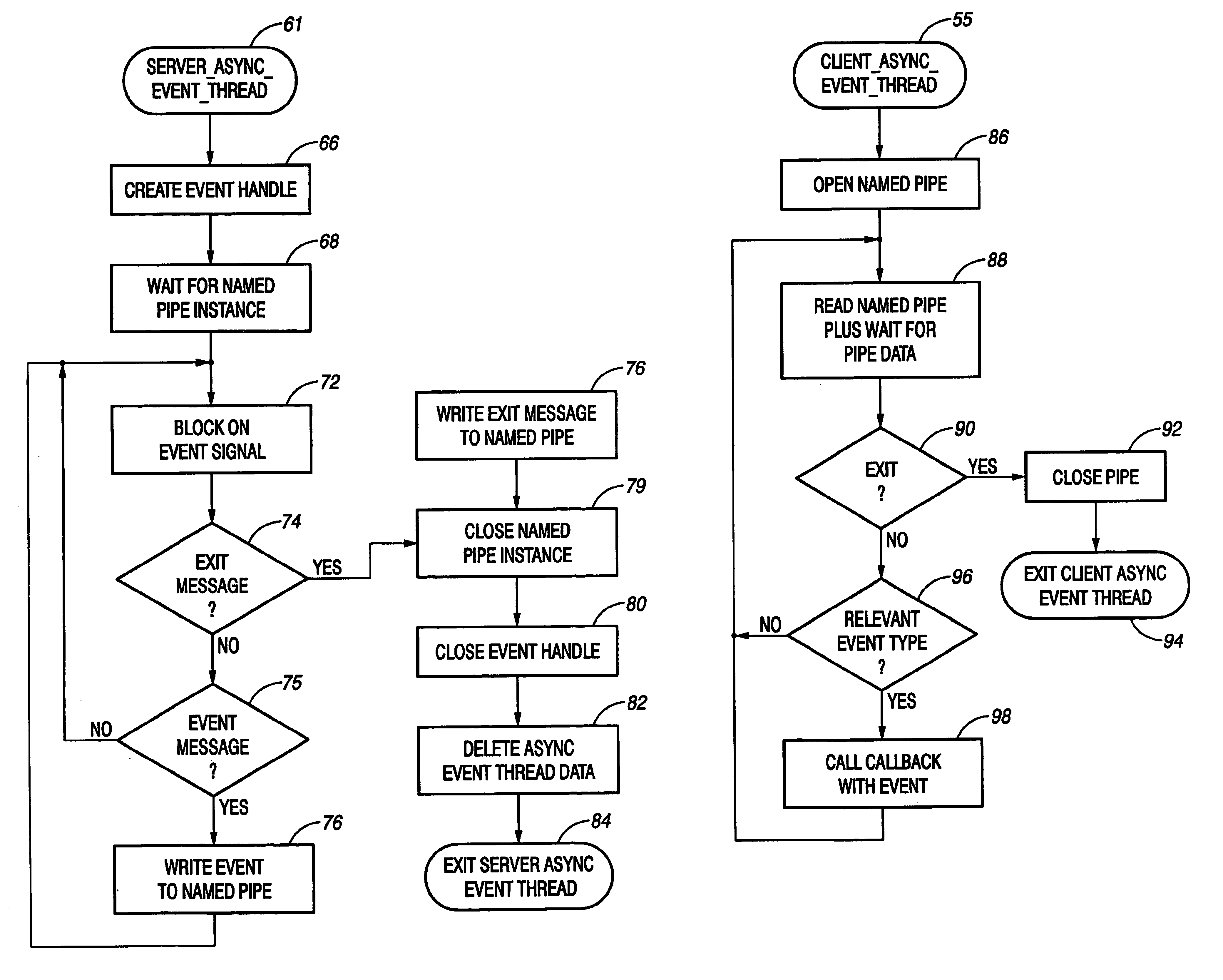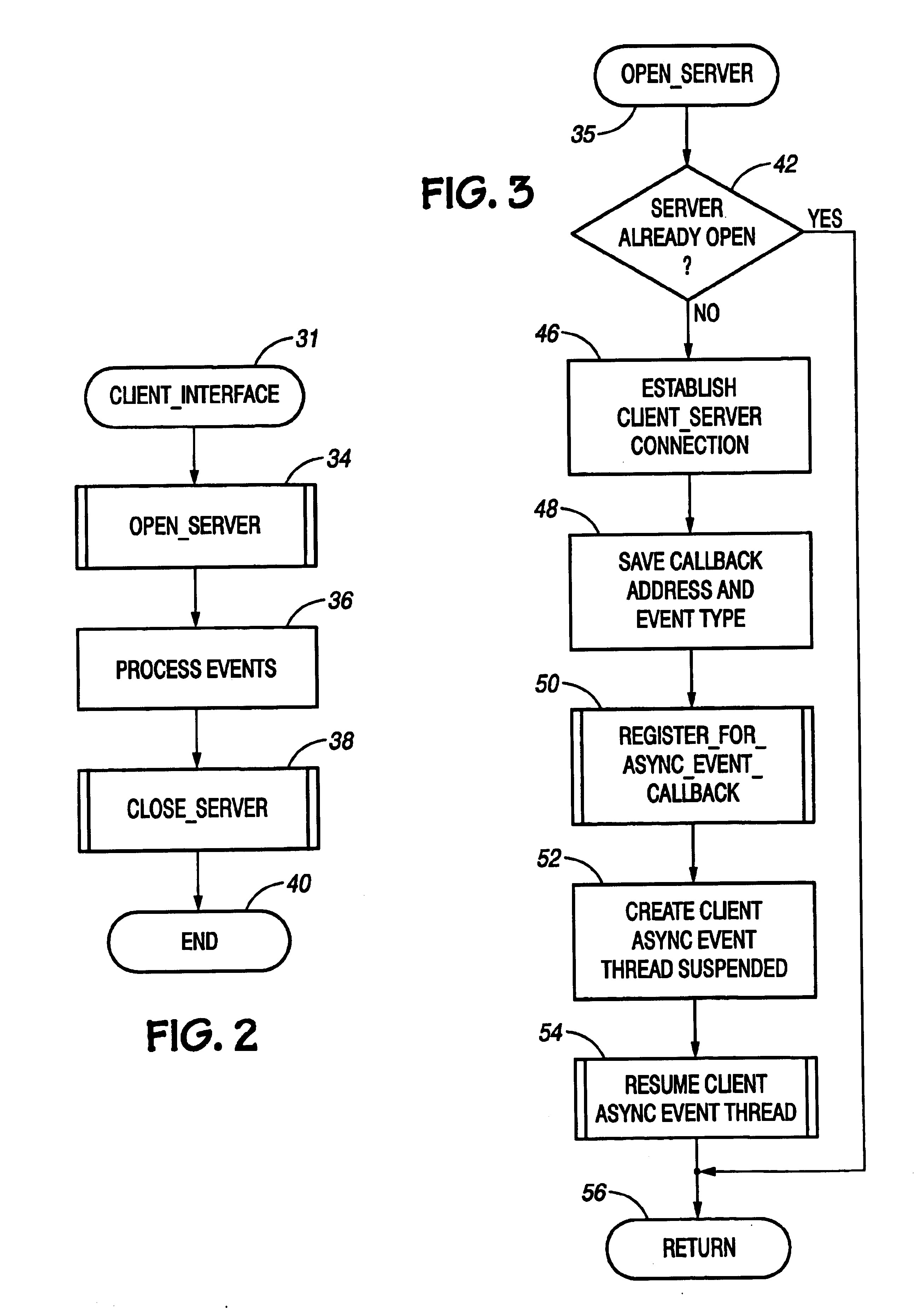Method of communicating asynchronous events to remote procedure call clients
a remote procedure and event communication technology, applied in the field of remote procedure call clients, can solve the problems of network traffic and system overhead, network traffic is also undesirably increased, and the rpc client software has not provided a server method,
- Summary
- Abstract
- Description
- Claims
- Application Information
AI Technical Summary
Benefits of technology
Problems solved by technology
Method used
Image
Examples
Embodiment Construction
[0028]Turning now to the drawings. FIG. 1 shows a schematic diagram of a remote procedure client 10 and a server 12 of a computer network system S. Both the client 10 and the server 12 include a multitasking operating system (not shown) that supports multiple threads of execution within a running process and a kernel for handling thread management. A process is a program that is loaded into memory and prepared for execution. A process may contain code, data, and other system resources—such as files, pipes, and synchronization objects—that are accessible to the threads of the process. Each process is started with a single thread. A thread is the basic entity to which the operating system allocates CPU time. A thread can execute any part of an application's code, including a part currently being executed by another thread. A multitasking operating system divides the available CPU time among the threads that need it. The operating system may utilize preemptive multitasking for allocati...
PUM
 Login to View More
Login to View More Abstract
Description
Claims
Application Information
 Login to View More
Login to View More - R&D
- Intellectual Property
- Life Sciences
- Materials
- Tech Scout
- Unparalleled Data Quality
- Higher Quality Content
- 60% Fewer Hallucinations
Browse by: Latest US Patents, China's latest patents, Technical Efficacy Thesaurus, Application Domain, Technology Topic, Popular Technical Reports.
© 2025 PatSnap. All rights reserved.Legal|Privacy policy|Modern Slavery Act Transparency Statement|Sitemap|About US| Contact US: help@patsnap.com



